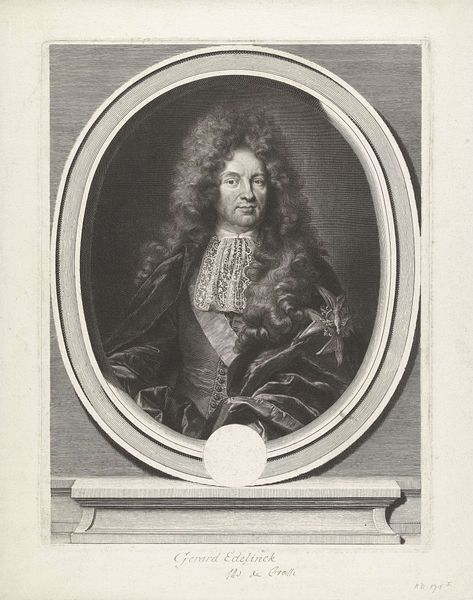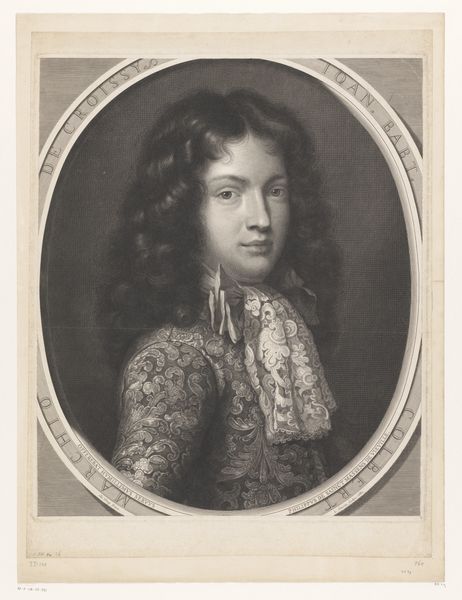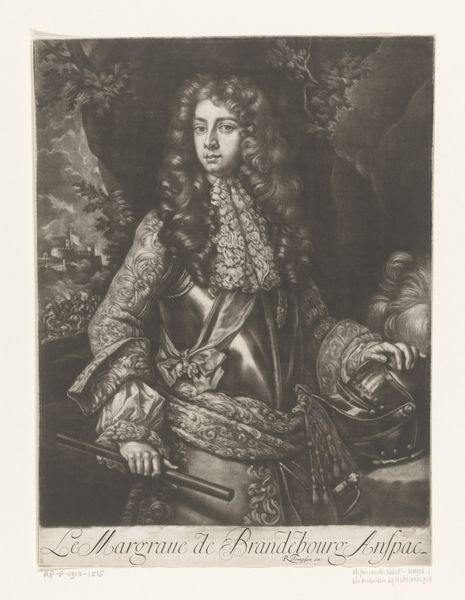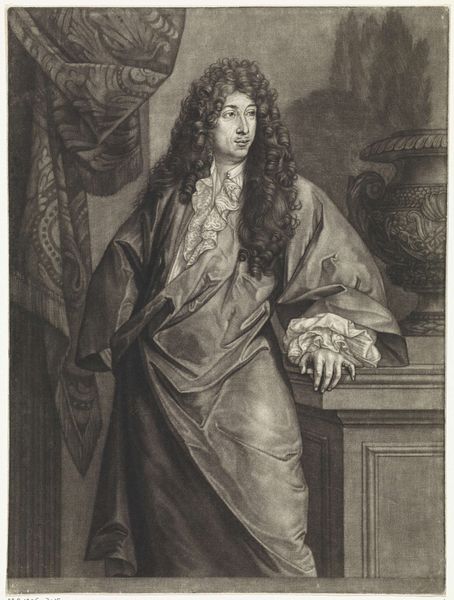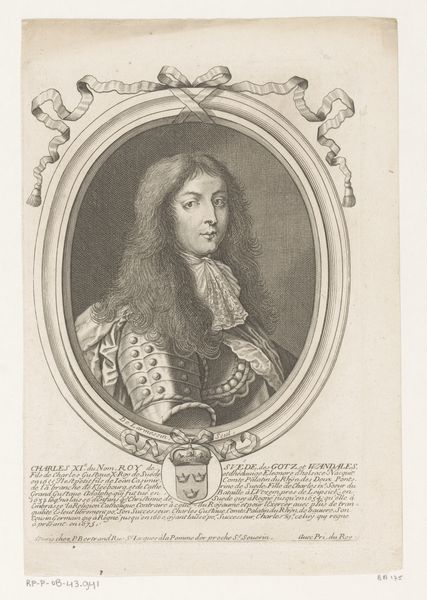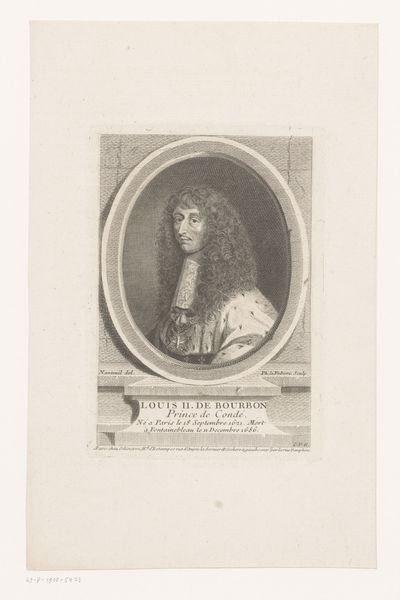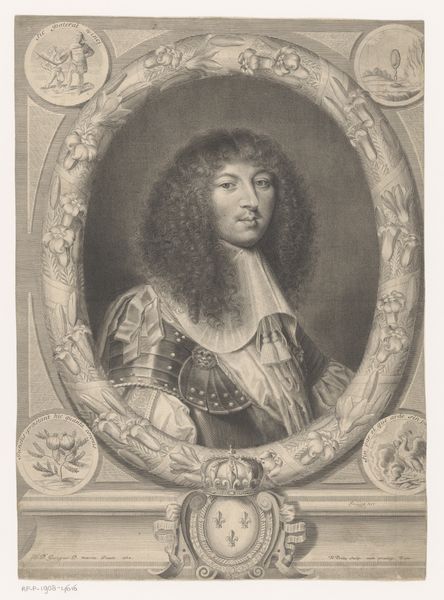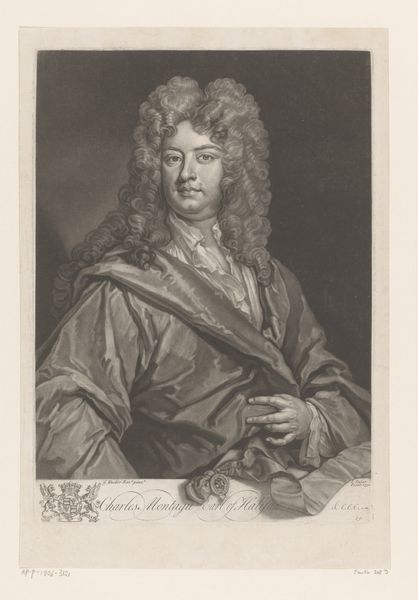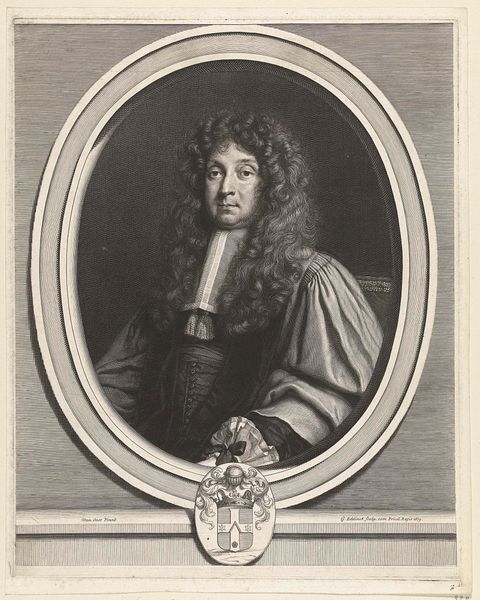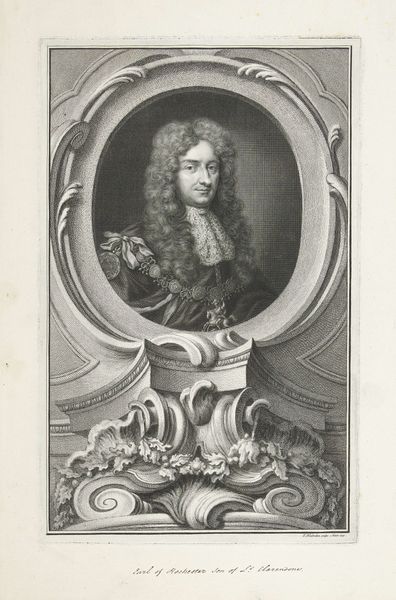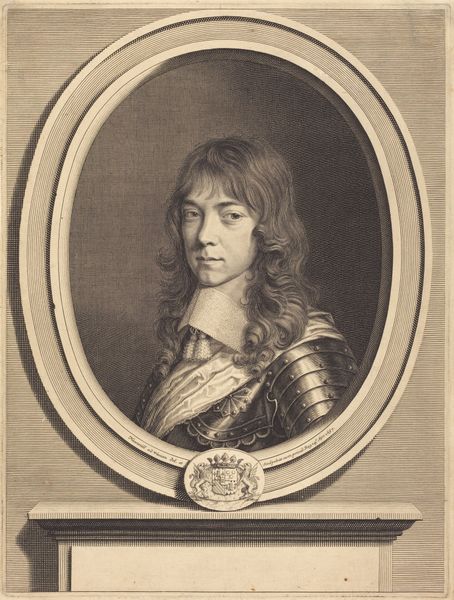
Dimensions: height 265 mm, width 201 mm
Copyright: Rijks Museum: Open Domain
Editor: Here we have a piece entitled "Portret van Cornelis van Aerssen van Sommelsdijk," dating anywhere from 1850 to 1930. It's an oil painting, seemingly in a Baroque style. The sitter looks quite dignified, almost melancholic. What strikes you most about this work? Curator: I'm drawn to the inherent tension within the portrait itself. The subject, rendered in what seems to be Baroque style—although it was painted much later—asserts authority through symbols of power like armor, a sword, and what appears to be his family crest. Yet, his expression reads as surprisingly vulnerable. Knowing what we do about the context of portraits of powerful men throughout history, do you think that tension reveals anything broader about this individual or about power itself? Editor: It’s interesting you point out the vulnerability. I was so focused on the trappings of power I almost missed that! Is that juxtaposition, maybe, a commentary on the burdens of leadership, or even the facade that people of power feel pressured to keep? Curator: Precisely. This layering is not uncommon with works produced after periods of revolution, where artists start to question what was originally created and why. Also consider the role gender may play in how we interpret it now; traditionally masculine symbols being undercut with what might read today as a kind of sensitivity. Does it complicate or challenge traditional views of masculinity and leadership during this later period? And what social factors might contribute to its continued relevance? Editor: That's a really interesting take I hadn't considered. It really does complicate the message – and it resonates with some issues we still discuss today. It seems I judged the sitter too soon. Curator: That's the beauty of art! It's not just about what’s depicted, but also about how we engage with those depictions across time, continuously re-evaluating what it means within ever-changing cultural contexts.
Comments
No comments
Be the first to comment and join the conversation on the ultimate creative platform.
